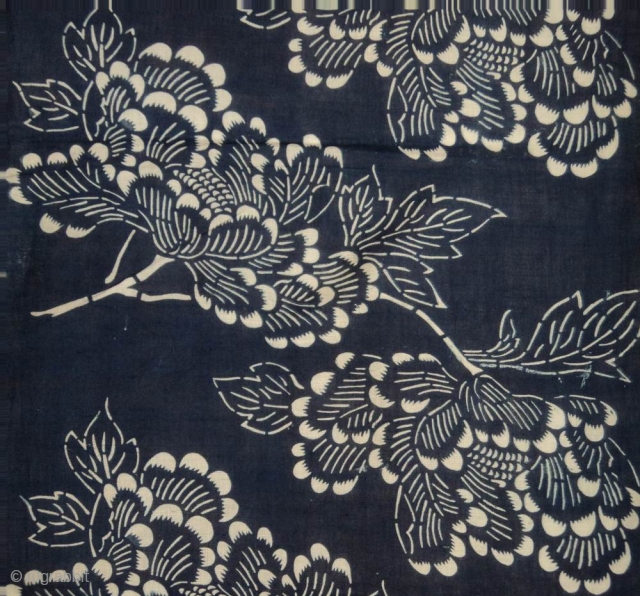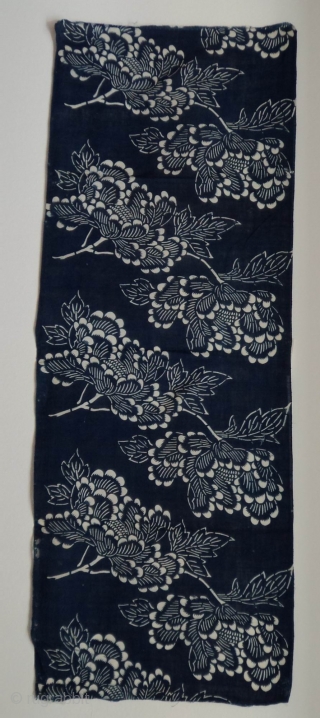Back
Asa Katazome textile panel, Japan, Meiji (circa 1890), cm88x32. Katazome is a resist dye technique in which a paste of rice flour and bran is applied to a cloth through a cut paper stencil (katagami). This paste is applied with a flat, blunt tool or a brush: where the paste has been pushed onto the cloth, dye will not penetrate. Dyes can be applied using an immersion method, by hand tinting, or by a combination of these applications, depending on the complexity of the desired effect. This katazome shows a repeated pattern of peony flowers and blossoms on a deep botanical indigo dyed ‘asa’ cloth. In Japanese, 'asa' is a common word used for three different plants, that is 'taima' (hemp), ‘karamushi’ (ramie) and ‘ama’ (linen). In our case we have an homespun linen cloth, with quite a crispy touch. There are a few very minor faults, such as tiny holes in the boundary zones, but the fabric is essentially in a very good condition. a rare find.
price:
SOLD
- Home
- Antique Rugs by Region
- Category
- Profiles
- Post Items Free
- Albums
- Benaki Museum of Islamic Art
- Budapest: Ottoman Carpets
- Gulbenkian Museum
- Islamic Carpets. Brooklyn
- Islamic Textiles. Brooklyn
- Konya Museum: Rugs
- MKG, Hamburg
- MMA: Caucasian Carpets
- MMA: Mamluk Carpets
- MMA: Mughal Indian Carpets
- MMA: Ottoman Carpets
- MMA: Safavid Persian Carpets
- MMA: Turkmen Rugs
- McCoy Jones Kilims
- Ottoman textiles. Met
- Philadelphia Museum
- Rugs and Carpets: Berlin
- Seljuqs at the Met
- TIEM, Istanbul: Carpets
- V&A: Classical Carpets
- Vakiflar Carpets: Istanbul
- Baluch Rugs: Indianapolis
- Gallery Exhibitions
- Jaf an Exhibition
- Alberto Levi Gallery
- Andean Textile
- Christie's London: 2016
- Francesca Galloway
- HALI at 40
- ICOC Washington, DC 2018
- Jajims of the Shahsavan
- London Islamic Week April, 2018
- Mongolian Felts
- Navajo Rugs: JB Moore
- Persian Piled Weavings
- SF Tribal & Textile Art Show 2020
- SF Tribal 2019
- Sotheby's: C. Alexander
- Turkish Prayer Rugs
- Turkmen Main Carpets ICOC 2007











